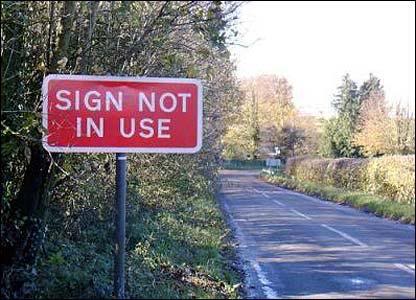There is a well-known and generally accepted philosophical principle known as the law or principle of non-contradiction that tells us that two contradictory propositions cannot both be true. To put it in terms of formal logic, a and not a cannot both be true. Thus, a statement cannot be both a statement of truth and a lie.
What follows from the principle of non-contradiction is that an argument that involves contradictory propositions must be false. For example, it is false to argue (a) a triangle has three sides, (b) shape x has four sides, (c) shape x is a triangle. This argument cannot be true because for (c) to be true either (a) or (b) must be false.
I was led to thinking about the principle of non-contradiction because of the press-release concerning the most recent meeting of the House of Bishops. [1]
This press release tells us that the proposals from the House of Bishops which were debated in Synod in February and which form the basis for their continuing work in response to Living in Love and Faith were that:
…. that, for the first time, same-sex couples could have a service in church in which there would be prayers of dedication, thanksgiving or for God’s blessing following a civil marriage or civil partnership.
It then went on to say that the proposals ‘would not, however, change the Church’s doctrine of Holy Matrimony.’
Both these statements are a correct description of the proposals brought to Synod by the bishops. What needs to be noted in addition, however, is that an amendment was added by Synod to the motion brought by the bishops. This stated that Synod endorsed the intention of the bishops that the final version of the proposed prayers ‘should not be contrary to, or indicative of a departure from, the doctrine of the Church of England.’
Putting these three elements together where we have now got to in the Church of England is that:
a) The bishops are proposing that same-sex couples could have a service in church in which there would be prayers of dedication, thanksgiving or for God’s blessing following a civil marriage or civil partnership;
b) The Church’s doctrine of Holy Matrimony will remain unchanged;
c) The proposed prayers must not be contrary to, or indicative of a departure from, this doctrine.
The problem with the combination of these elements is that the principle of non-contradiction comes into play. If (b) is true then either (a) or (c ) will not be able to be true.
To understand why this is that case the first thing that needs to be noted is that in both the Book of Common Prayer and Canon B.30 which are determinative on the matter ‘Holy Matrimony’ is simply a synonym for ‘marriage.’ The Church of England’s doctrine of Holy Matrimony is what it believes and teaches about marriage.
The second thing that needs to be noted is that if we consult the ‘historic formularies’ of the Church of England (the Prayer Book, the Thirty-Nine Articles, and the 1662 Ordinal), The Second Book of Homilies, Canon B.30 and other recent Church of England documents we find that what the Church of England believes and teaches about marriage can be summarised in the following six points:
- Marriage is a state of life ordained by God himself at creation as such it is a way of life that applies to all people at all times and everywhere. Any state of life that does not accord with the form of marriage ordained by God is not marriage.
- Marriage is a serious vocation to which some, but not all, human beings are called by God. Those who are called to enter into it must do so with due thought and reverence for its God given character. Marriage and singleness are two ways of life, neither of which is necessarily more holy than the other.
- Marriage is a sexually exclusive relationship entered into for life between one man and one woman, who are not married to anyone else, and who are not close blood relatives.
- Marriage is a relationship of ‘perpetual, friendly fellowship’ that is not a dominical sacrament in the same way as Baptism or the Lord’s Supper, but is a sign pointing to the loving union that exists between Christ and his Church and a means of grace through which a husband and wife can grow as the people God created them to be.
- Marriage a relationship that provides the sole proper context for sexual intercourse and which has as one of its key purposes the procreation and nurturing of children to be the next generation of God’s people.
- Clergy are free to be either married or single depending on the particular vocation to which God calls them, but they must live in a godly way in either vocation.
The third thing that needs to be noted is that if (1) and (3) are true then it follows that a same-sex relationship is not a marriage (even if that is what the law of the land calls it) and if (5) is true then any form of same-sex sexual relationship (which necessarily cannot be a marital one) is a relationships will falls outside of the God-given limits for sexual intercourse. It is what the New Testament calls porneia, sexual activity contrary to the will of God.
Read it all at The Reflections of an Anglican Theologian










